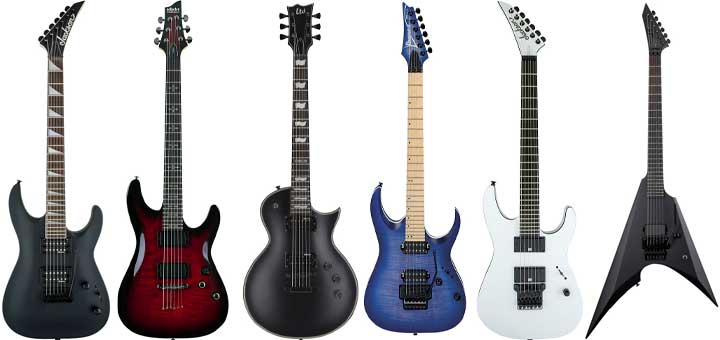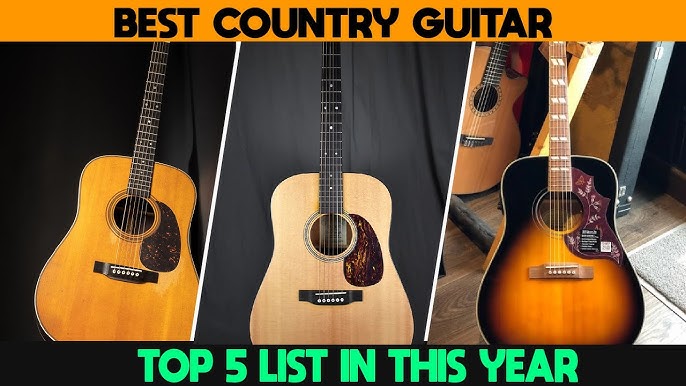Are you ready to unleash your inner rockstar? Look no further than our comprehensive guide on finding the best metal guitar. Whether you’re a seasoned shredder or a beginner looking to amp up your skills, we’ve got you covered. From exploring different body styles to examining the importance of pickups and neck profiles, this guide takes you through everything you need to know to make an informed decision. So grab your pick and get ready to dive into the world of metal guitars – your perfect instrument is just a riff away.
Types of Metal Guitars
Solid-Body Electric Guitars
Solid-body electric guitars are a staple in the world of metal music. These guitars are known for their sustain and powerful tone. They are made from a single block of wood, which reduces feedback and helps produce a heavier sound. Solid-body guitars are versatile and can handle the high-gain tones that are characteristic of metal music. They also tend to have a slimmer profile, making them comfortable to play during long sessions.
Semi-Hollow Body Electric Guitars
While not as commonly used in metal music as solid-body guitars, semi-hollow body electric guitars can still be a great option for metal players looking for a unique sound and aesthetic. These guitars have a hollow body with a center block, which adds resonance to the tone. The added depth and warmth make them perfect for genres such as blues and jazz, but they can also be suitable for metal musicians who want a slightly different tone.
7-String Guitars
7-string guitars have become increasingly popular in the metal community. The additional string allows for lower tunings, making it easier to achieve those heavy, chugging riffs and thunderous low-end. This type of guitar is favored by players who enjoy experimenting with extended range and complex chord voicings.
8-String Guitars
For those who crave even more range and versatility, 8-string guitars are an excellent choice. With an extra string on top of the standard 6, these guitars open up a whole new world of possibilities. The extended range allows players to explore lower tunings and create incredibly heavy and intense sounds. 8-string guitars are commonly used in progressive metal and djent genres.
Baritone Guitars
Baritone guitars are designed to produce deep, rich tones. They have a longer scale length, which allows for lower tunings while maintaining proper string tension and intonation. These guitars are perfect for players who want to achieve a darker, more aggressive sound. Baritone guitars are commonly used in genres like doom metal, sludge metal, and certain subgenres of extreme metal.
Extended Range Guitars
Extended range guitars, such as 7-string and 8-string models, fall under this category. They offer additional strings beyond the standard 6 and provide extended range capabilities. These guitars are ideal for players who want to explore lower tunings and push the boundaries of traditional guitar playing. Extended range guitars allow for greater sonic possibilities and are a popular choice among metal guitarists.
Important Features to Consider
Pickups
Pickups are one of the most crucial elements of a metal guitar. They are responsible for converting the vibrations of the strings into an electrical signal, which is then sent to the amplifier. The choice of pickups greatly affects the overall tone and sound of the guitar.
- Active Pickups: Active pickups require a battery to operate and are known for their high output and aggressive tone. They provide a more compressed and saturated sound, making them suitable for heavy genres such as metal.
- Passive Pickups: Passive pickups do not require a battery and offer a more dynamic and organic tone. They are known for their clarity and responsiveness, making them versatile for various genres of music. While they may not have the same level of high gain as active pickups, they can still deliver excellent results in metal playing.
- Humbucker Pickups: Humbucker pickups are designed to eliminate hum and offer a thicker, warmer sound. They are popular with metal guitarists due to their ability to handle high gain and produce a full-bodied tone.
- Single-Coil Pickups: Single-coil pickups are commonly associated with genres like blues and rock, but they can still be suitable for metal playing. They offer a cleaner and brighter tone, with excellent clarity and definition.
- Coil Splitting: Some guitars have the ability to split humbucker pickups into single-coil mode, offering greater tonal versatility. This feature allows players to access a wider range of sounds and is particularly useful when playing various genres aside from metal.
Scale Length
The scale length of a guitar refers to the distance between the nut and the bridge. It affects the string tension, and consequently, the overall feel and sound of the instrument. Different scale lengths can influence the playability of a guitar, as well as the tone it produces.
- Standard Scale Length: Most electric guitars feature a standard scale length of around 25.5 inches, which offers a balanced tone and feel. This scale length is suitable for a wide range of playing styles and genres, including metal.
- Extended Scale Length: Guitars with an extended scale length, typically ranging from 26.5 to 30 inches, are ideal for players who enjoy downtuning or want a more pronounced low-end response. The longer scale length helps maintain proper string tension, resulting in clearer and more defined low notes.
- Short Scale Length: Short scale length guitars, usually around 24.75 inches, have a slightly warmer and mellower sound. They are comfortable to play, especially for players with smaller hands, but may not deliver the same level of clarity and tightness in the low end as longer scale length guitars.
Neck Profile
The neck profile is an essential factor to consider when choosing a metal guitar, as it greatly affects your playing comfort and technique. Different neck profiles can offer varied levels of stability and speed.
- Slim C: The Slim C neck profile is characterized by its slim and comfortable shape, making it easy to navigate across the fretboard. It provides a balanced feel and is suitable for players who prefer a more modern and fast-playing guitar.
- Thin U: The Thin U neck profile has a similar slim profile to the Slim C, but with a slightly rounder shape. It offers excellent playability and is favored by many metal guitarists for its speed and comfort.
- D Shape: The D shape neck profile is thicker and provides more support for the hand. It offers a substantial feel and is suitable for players who prefer a chunkier neck.
- V Shape: The V shape neck profile features a distinctive V-shaped contour at the back of the neck. It can offer a vintage feel and improved grip, but may not be as conducive to faster playing styles.
- Wizard Neck: The Wizard neck profile, often associated with Ibanez guitars, is renowned for its super slim and flat shape. It allows for lightning-fast playing and is popular among shredders and players who prioritize speed and agility.
Body Material
The body material of a guitar plays a significant role in shaping its sound and overall tone. Different materials can produce distinct characteristics that may be more or less desirable depending on the style of metal music you intend to play.
- Mahogany: Mahogany is a popular body material choice for metal guitars, as it offers a warm, rich, and full sound. It enhances sustain, provides a strong midrange response, and can add depth and heaviness to your playing. Mahogany is often favored in genres like classic metal, thrash metal, and progressive metal.
- Maple: Maple is known for its bright and snappy tonal qualities. It offers excellent note separation and clarity, making it suitable for fast and intricate playing styles. Maple-bodied guitars can add brightness and articulation to your sound, making them suitable for genres like neoclassical metal and shredding.
- Alder: Alder is a fairly balanced tonewood that produces a full yet clear sound. It provides a good blend of warmth and brightness, allowing for versatility across various styles of metal.
- Basswood: Basswood is a lightweight tonewood that offers a well-balanced tone with a slight emphasis on the midrange. It is often used in combination with other materials to achieve specific tonal characteristics.
Bridge Type
The bridge of a guitar is responsible for anchoring the strings and influencing sustain, stability, and overall tone. Different bridge types offer varying levels of tuning stability and playing comfort.
- Tune-O-Matic: The Tune-O-Matic bridge is a popular choice for metal guitars due to its excellent tuning stability and adjustment capabilities. It allows for precise intonation and individual string height adjustment.
- Floyd Rose: The Floyd Rose bridge is a floating tremolo system that enables extreme pitch bending and dive bombs. It offers exceptional tuning stability, but mastering its use requires some skill and adjustment.
- Fixed Bridge: Fixed bridges, also known as hardtail bridges, are straightforward and reliable. They provide excellent sustain and tuning stability but do not allow for pitch bending or tremolo effects.
- String-Through: String-through bridges offer enhanced sustain and string resonance. The strings are threaded through the back of the guitar body, resulting in a more direct transfer of vibrations.
- Hardtail: Hardtail bridges are fixed bridges that do not have any tremolo functionality. They offer excellent stability and sustain, making them suitable for players who prefer a straightforward and reliable setup.
- Locking Tremolo: Locking tremolo bridges, such as the Floyd Rose double-locking system, offer enhanced tuning stability and the ability to perform dramatic pitch bends. They require a bit more maintenance but can be invaluable for players who rely heavily on tremolo effects.
Number of Frets
The number of frets on a guitar determines how many notes you can play within a single position. While the choice of frets may not be as critical for metal playing as some other features, it is still worth considering.
- 22 Frets: Many guitars feature a standard 22 frets, which provide ample range for most players. If you don’t require the highest notes on the neck, a 22-fret guitar can be a perfectly suitable choice.
- 24 Frets: Guitars with 24 frets allow for access to two additional notes at the highest point of the neck. This extra range can be useful for players who frequently venture into the upper register of the instrument.
- 27+ Frets: For players who demand the utmost reach and an extended range, guitars with 27 or more frets are available. These guitars are popular among metal shredders and can provide access to extreme high notes.
Popular Metal Guitar Brands
ESP
ESP is a well-respected brand in the metal music community, known for producing high-quality guitars that cater to the needs of heavy players. ESP guitars are often seen in the hands of renowned metal guitarists, and the brand offers a wide range of models to suit different playing styles and budgets.
Jackson
Jackson is synonymous with metal and has been a go-to brand for many legendary guitarists. Their guitars are designed with shredders in mind, offering fast necks, high-output pickups, and aggressive body shapes. Jackson guitars are known for their excellent playability and are a staple in the metal genre.
Schecter
Schecter guitars have gained popularity among metal musicians for their exceptional build quality, tonal versatility, and affordability. The brand offers various models tailored to different styles of metal, from classic to extreme. Schecter guitars are a favorite among both established artists and up-and-coming players.
Ibanez
Ibanez is renowned for its exceptional craftsmanship and high-performance guitars. They have a strong presence in the metal community, particularly in genres that require fast and technical playing. Ibanez guitars, often characterized by their slim and fast necks, are favored by shredders and progressive metal guitarists.
Gibson
While Gibson may be more closely associated with classic rock and blues, they have also made their mark in the metal world. Gibson guitars, particularly the iconic Les Paul model, are known for their thick, powerful tones and sustain. Many metal guitarists appreciate the warmth and depth offered by Gibson guitars.
Fender
Fender guitars, primarily known for their association with genres like blues, rock, and country, have a place in the realm of metal as well. Fender’s Stratocaster and Telecaster models have found their way into the hands of metal guitarists who value their versatility and unique tonal characteristics.
Tips for Playing Metal Guitars
Experiment with Different Tunings
One of the key elements of metal music is the ability to achieve heavy and crushing tones. Exploring different tunings can significantly impact the depth and heaviness of your sound. Lower tunings, such as Drop D or Drop C, are commonly used in metal genres to achieve a heavier and more aggressive sound. Experimenting with alternative tunings can give you a fresh perspective and inspire new ideas for your playing.
Use Proper Gain Settings
Achieving the right amount of gain is crucial when playing metal. It is important to find the right balance so that your tone is both powerful and well-defined. Too much gain can result in a muddy and indistinct sound, while too little may not give you the heaviness and aggression you desire. Take the time to dial in your gain settings and test different levels to find what works best for your playing style and the music you are creating.
Master Palm Muting
Palm muting is a technique widely used in metal music to add a percussive and aggressive element to your playing. It involves resting the edge of your picking hand near the bridge of the guitar, lightly dampening the strings. This technique can greatly enhance your rhythm playing and is essential for achieving tight and chuggy palm-muted riffs. Practice palm muting at different positions along the string to discover the range of tones and textures you can produce.
Practice Speed and Accuracy
Metal music often demands fast and precise playing. It is crucial to dedicate time to developing your speed and accuracy to execute rapid-fire riffs and solos. Start slow and gradually increase your speed as you become more comfortable with the patterns. Use a metronome to build your sense of timing and gradually push yourself to play at faster tempos. Remember, speed is only effective when combined with accuracy, so focus on clean and articulate playing as well.
Learn to Play Riffs and Chords
Metal guitar playing is often characterized by powerful and memorable riffs. Take the time to learn and master iconic metal riffs from your favorite bands and incorporate them into your practice routine. Explore different chord voicings and progressions commonly used in metal music. By developing a solid foundation in playing riffs and chords, you can build a strong repertoire and add your own personal touch to your music.
Utilize Techniques like Sweep Picking and Tapping
Metal guitarists often employ advanced techniques to add depth and complexity to their playing. Techniques such as sweep picking and tapping can take your solos and melodies to the next level. Spend time practicing these techniques individually, ensuring that your movements are clean and precise. Gradually incorporate them into your playing, starting at a slower tempo and gradually building up speed. Don’t be afraid to experiment and explore new techniques to discover your unique voice on the instrument.
In conclusion, finding the best metal guitar for your playing style and preferences is a combination of exploring various features and considering reputable brands. The type of guitar, pickups, scale length, neck profile, body material, bridge type, and number of frets all play a role in shaping your tone and playability. With the right knowledge and understanding, you can make an informed decision when choosing a metal guitar that will inspire and empower your musical journey. Remember to experiment, practice diligently, and have fun as you embark on your metal guitar adventure!











